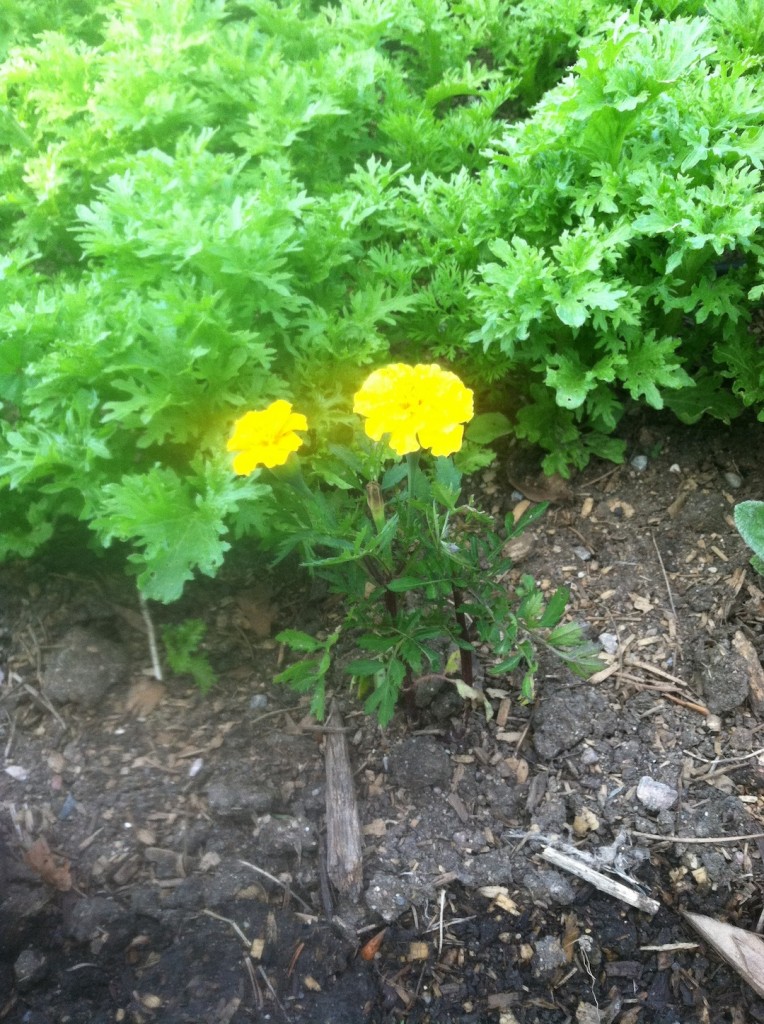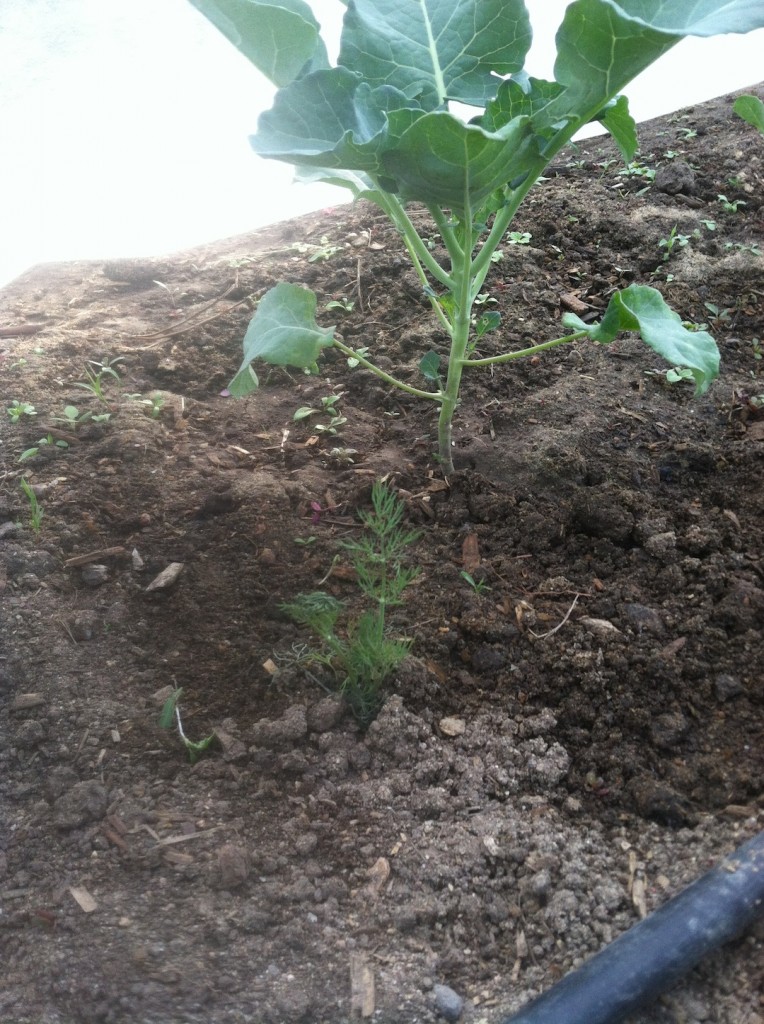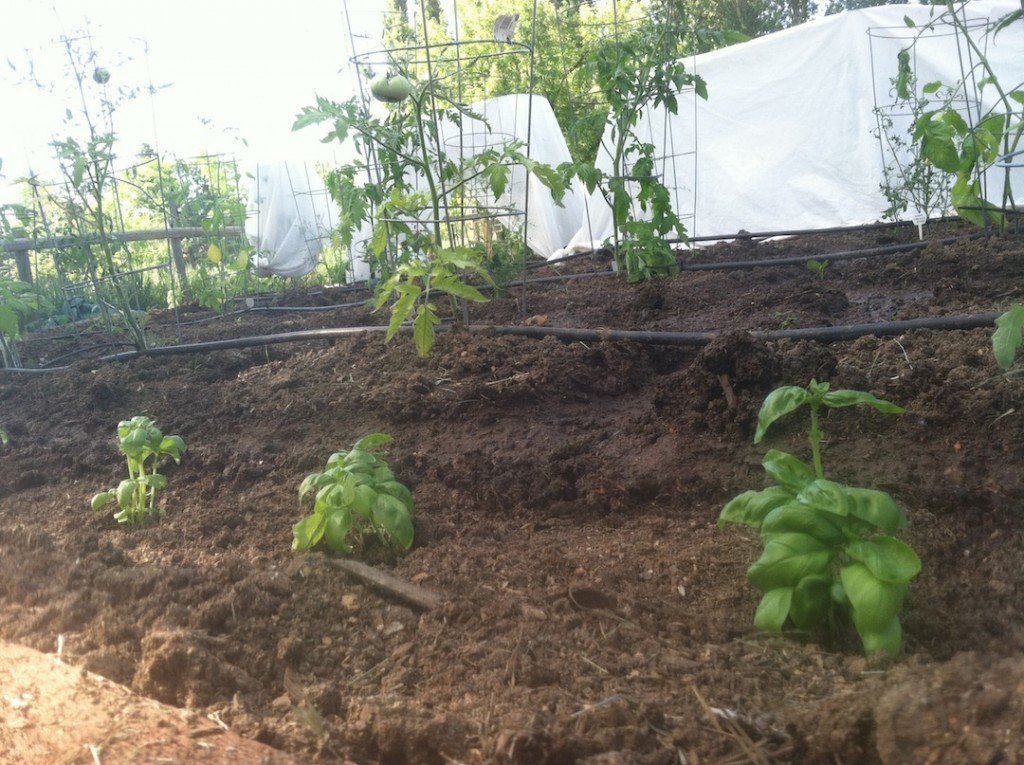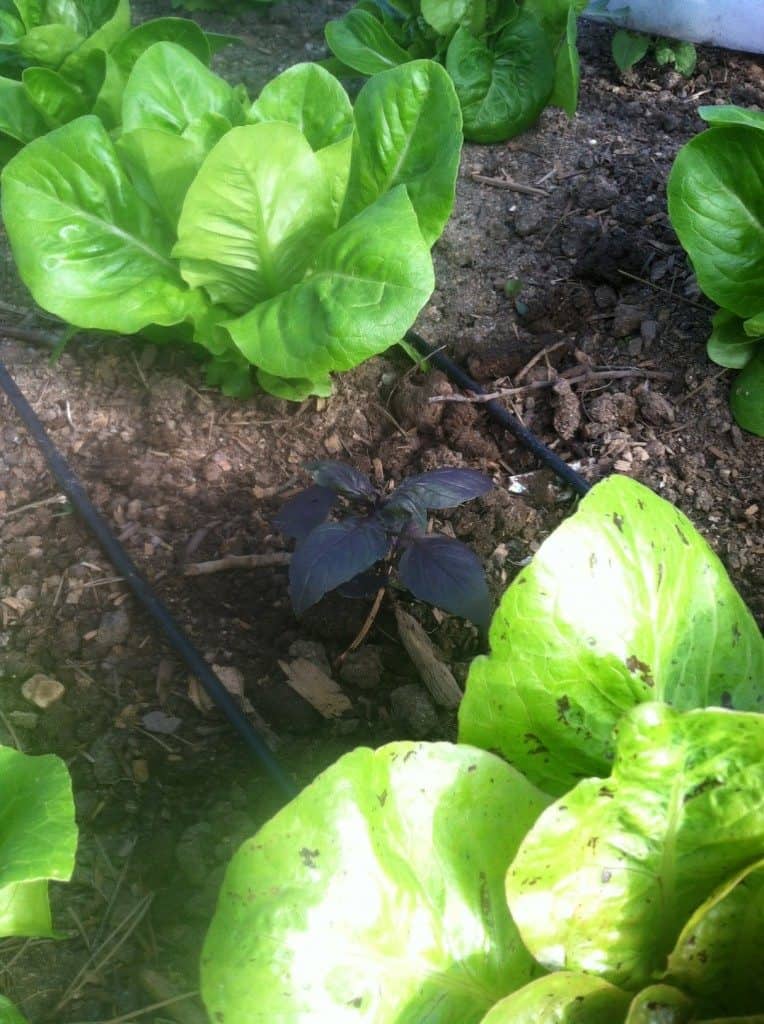Carrots love tomatoes, and roses love garlic. Much like humans, plants like to be around other plants they love: their companions. Companion planting is the practice of designing the layout of your crops so that two or more vegetables, herbs, or flowers with beneficial characteristics grow close together. And it’s pretty amazing! Beneficial characteristics include control of good and bad insects, increased health and strength, higher yields, and shading or ground cover. And because companion planting mimics the natural ways plants thrive, it’s especially important for organic farms and gardens that don’t rely on pesticides and chemicals. As the farmer, it’s your role to choose the best neighbors for your crops.
Why does companion planting work? Because all plants exude chemicals from their roots, leaves, or flowers. These chemicals suppress and repel harmful pests, attract beneficial insects, or both. Marigolds are a perfect example. We plant them throughout our rows not only for their vibrant color, but also because they excrete thiophene, which repels nematodes. At the same time, they attract beneficial insects such as bees, which pollinate crops in the garden. Companion planting can also act as a decoy to draw pests away from the main plant, such as with trap crops. Nasturtiums, for example, are a perfect decoy for caterpillars, which feed primarily on members of the cabbage family. Planting these edible flowers around cabbage, broccoli, and cauliflower will therefore protect them from damage.

Aromatic herbs in general make excellent companions for the cabbage family (brassicas). Chamomile accumulates calcium, potassium, and sulfur, which returns to the soil and improves cabbage growth and flavor. Planting dill with broccoli yields similar results. And we can’t forget to mention that planting basil with tomatoes or lettuce improves their flavor and growth rate.


There are also strategies for maximizing your land use and preventing nutrients from washing away from the soil. These include planting deep-rooted crops with shallow-rooted crops, or tall crops like broccoli with shorter crops like radishes and lettuces that require partial shade.
Single-crop environments are stagnant, dull, and unable to sustain healthy crops over multiple years of growing. Companion planting, on the other hand, encourages biodiversity by providing variety for insects and soil organisms
What companion planting strategies do you stand by?


